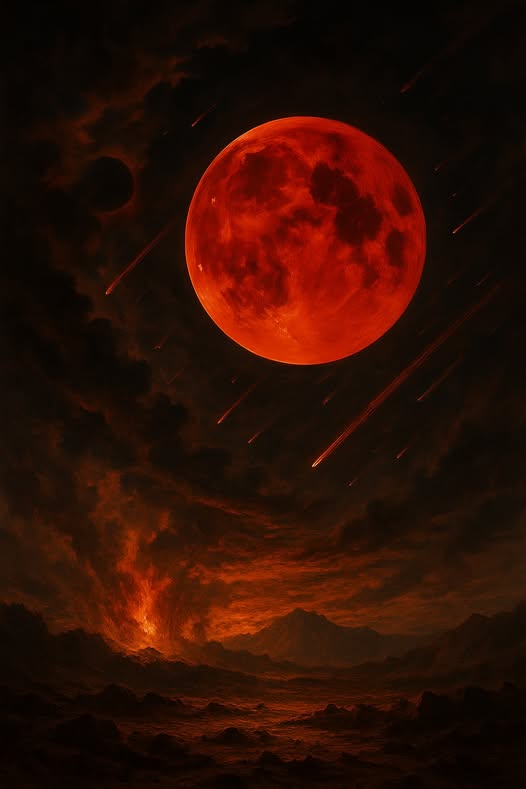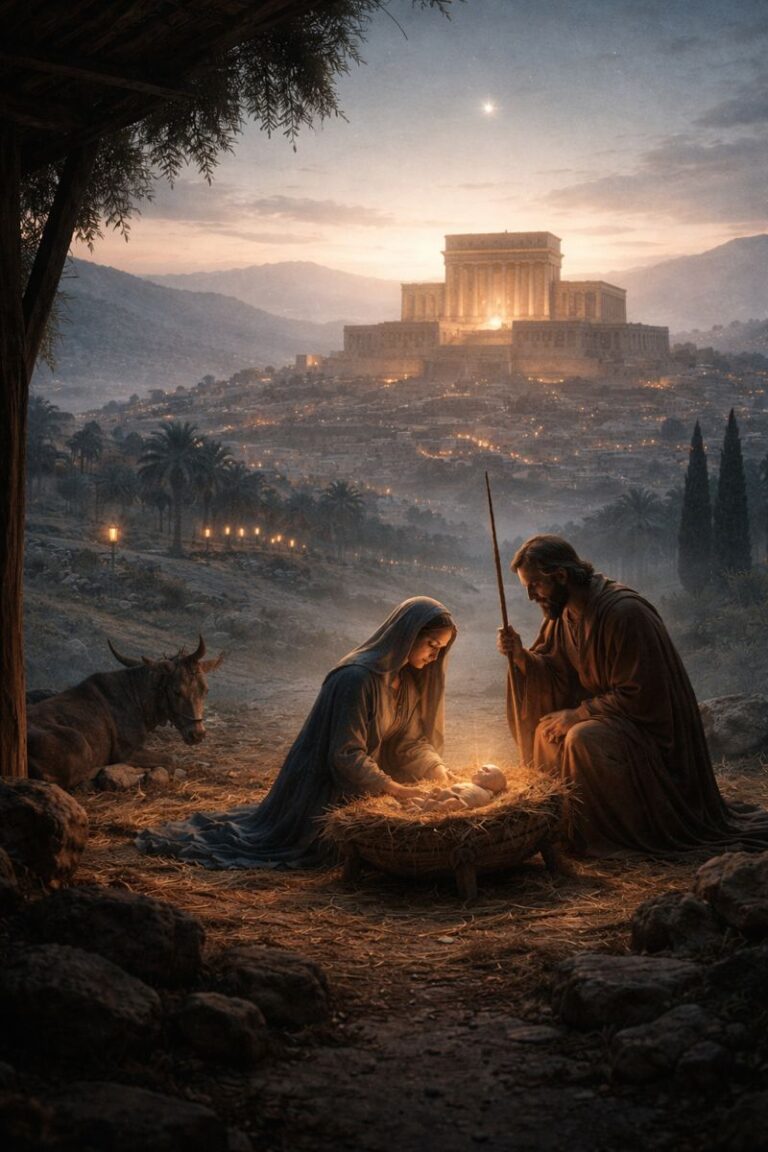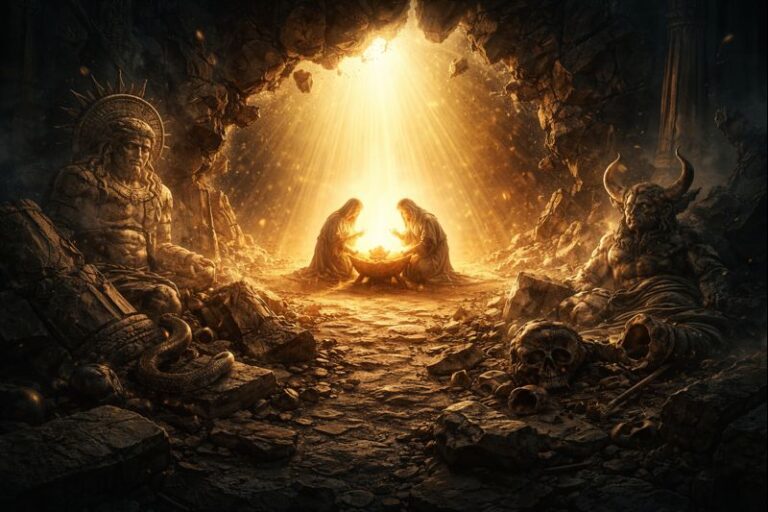
In recent years, a growing number of teachers and authors have claimed that “blood moons,” lunar eclipses where the moon takes on a reddish hue, are signals of prophetic fulfillment. These claims have gained traction through books, livestreams, and social media, often tying the events to Israel, Jewish feast days, and the end times. For some, the appearance of a red moon has become a trigger for apocalyptic speculation and sensational headlines. But are these events truly rare? And do they carry the prophetic weight that people assign to them?
What Is a Blood Moon?
A blood moon is simply a total lunar eclipse. It occurs when the Earth moves between the sun and the moon, causing sunlight to filter through the Earth’s atmosphere and scatter in a way that makes the moon appear red. This is a normal, predictable event in the natural world. It’s not mysterious or unexpected. In fact, blood moons occur regularly. There are typically one to three total lunar eclipses every year. For any given location on Earth, a total lunar eclipse is visible about once every two and a half years. These are not rare phenomena, and they have been occurring and forecasted by astronomers for thousands of years.
What About the Famous Tetrads?
Much has been made of the idea of “tetrads,” which are four total lunar eclipses in a row over a two-year span. The tetrad of 2014–2015, in particular, was the subject of several books and sermons because each of the four eclipses fell on Jewish feast days. This alignment was portrayed as prophetically significant.
However, the facts tell a different story. Tetrads are not uncommon. There have been sixty-five of them since the time of Christ, and eight more are expected in this century. Because the Jewish feast days are determined by a lunar calendar, lunar eclipses falling on them is not exceptional. It’s mathematical. Most tetrads have passed without any prophetic significance. Some occurred during relative historical quiet. Others followed major events but were not warnings or signs of their arrival. Claims about their meaning are usually constructed after the fact, not before.
Are Blood Moons in the Bible?
There are indeed passages in Scripture that speak of the moon turning to blood. Joel prophesied that the moon would turn to blood before the great and awesome Day of the Lord. Peter quoted this in Acts at Pentecost, connecting the prophecy to the outpouring of the Holy Spirit. The book of Revelation describes a time when the full moon becomes like blood as part of a series of cosmic upheavals. But these passages are not referring to ordinary eclipses. They are describing supernatural signs accompanying divine intervention. These moments are not routine. They are terrifying, undeniable events that mark the arrival of God’s judgment. They do not align with the quiet, regional, and fully predictable nature of modern blood moons.
When Prophecy Is Fulfilled, There Will Be No Doubt
When biblical prophecy is truly fulfilled, there will be no ambiguity. It will not rely on complex date-counting or eclipse charts. It will be clear. Cosmic. Terrifying. Holy. The imagery in Joel and Revelation is not poetic license for natural events. It is a warning of supernatural upheaval. The sun will go dark. The stars will fall. The heavens will shake. The earth will groan. The nations will mourn. These are not events that can be tracked on a NASA calendar. They are moments of divine disruption when creation itself responds to its Creator. No one will ask, “Was that it?” Everyone will know the Day of the Lord has come.
Blood Moons Are Not Signs of a Rapture
One of the more persistent claims made in blood moon prophecy circles is that these events somehow signal the Rapture of the Church. The argument usually goes something like this: the moon will turn to blood, as mentioned in Joel or Revelation, and this must mean the Church is about to be taken up. But this connection is based more on speculation than sound theology or responsible exegesis.
The Bible never links the timing of a lunar eclipse to the Rapture. In fact, the passages that mention the moon turning to blood are not tied to the idea of a secret or sudden disappearance of believers. Instead, they are associated with dramatic, visible events tied to judgment and upheaval—what many would describe as the Day of the Lord. These signs are part of a larger apocalyptic scene that includes cosmic disturbances, terror on the earth, and visible disruption of the created order.
If the Rapture is to occur at all, it will not depend on astronomical alignments to set the stage. Scripture teaches that no one knows the day or hour. To treat blood moons as countdown markers for Christ’s return is to flirt with the same error Christ warned against when He rebuked those who demanded signs in the sky. The message of the New Testament is consistent: be ready at all times, not just when the moon turns red.
Conclusion
Blood moons are not rare, and they are not mysterious. They are majestic reminders of the beauty of creation, but they are not cosmic sirens warning of the end. The blood moon in prophecy is not a routine eclipse visible only in certain parts of the world. It is a sign that creation itself is being shaken. When that day comes, there will be no confusion. The world will not need a book or a broadcast to explain it. Every knee will bow. Every eye will see. Until then, we are called to watch, not the skies, but the Savior.
Discussion Questions
- Why do people today treat blood moons as significant prophetic signs, and what might be driving that belief?
- How does the Bible describe the moon turning to blood, and what sets that imagery apart from ordinary lunar eclipses?
- In what ways does reversing the relationship between prophecy and astronomy create theological confusion?
- What historical examples challenge the idea that tetrads are prophetically important?
- Why is it important to emphasize that true prophetic fulfillment will be unmistakable?
Want to Know More?
- Michael S. Heiser, The Unseen Realm
Explores how the cosmic language of Scripture, including references to signs in the heavens, fits within a supernatural biblical worldview. - Craig S. Keener, Revelation (NIV Application Commentary)
Offers a careful, contextual reading of Revelation, helping readers distinguish between figurative imagery and theological truths. - Gordon D. Fee & Douglas Stuart, How to Read the Bible for All Its Worth
A trusted guide for interpreting prophetic and apocalyptic passages without falling into speculation or misapplication. - Ben Witherington III, Revelation and the End Times
A concise, accessible explanation of how Revelation should be understood today, avoiding sensationalism. - John H. Walton, The Lost World of Scripture
Explains how ancient literary practices shape our understanding of biblical prophecy and divine communication.




